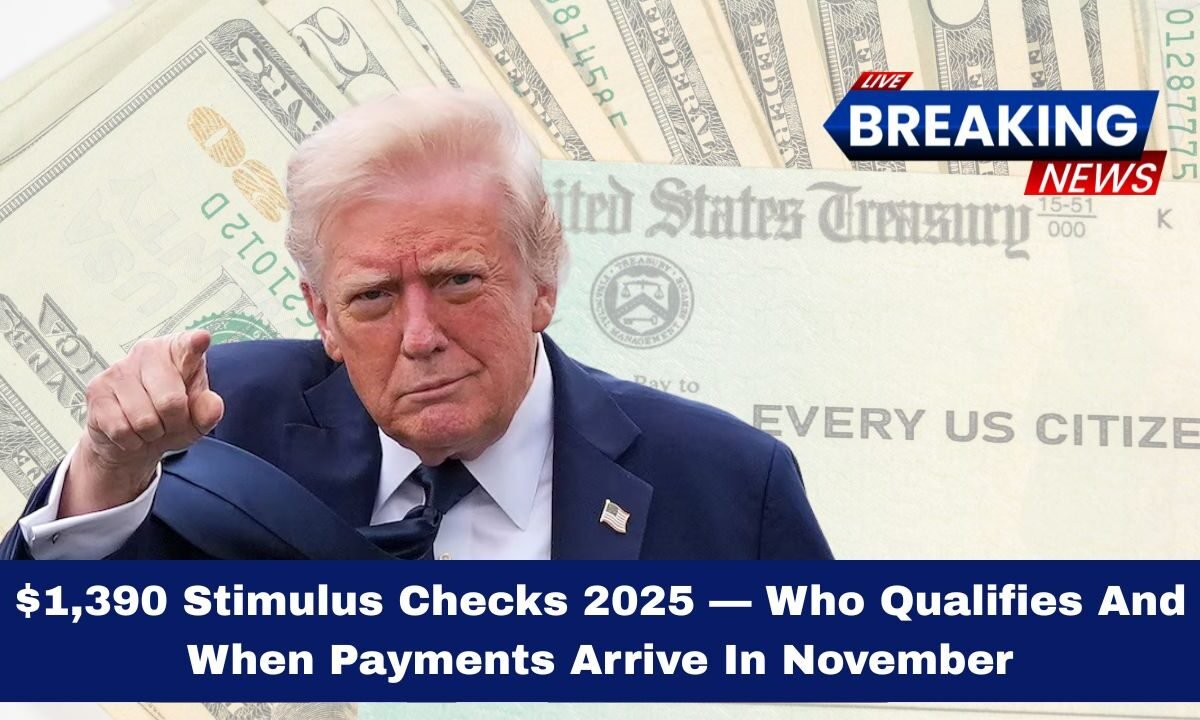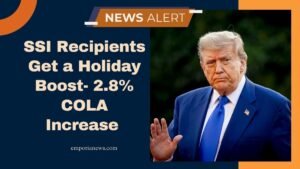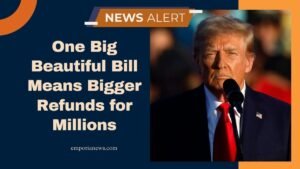If you’ve heard talk of $1,390 stimulus checks coming in November 2025, you’re not alone. This figure has gained attention as a potential relief payment aimed at helping many Americans cover rising costs. But what is the truth behind it?
Who really qualifies, and when could payments arrive? Below is a detailed look at everything you should know — with bolded keywords to guide you.
What Is the $1,390 Payment?
The $1,390 stimulus payment refers to a proposed relief amount in 2025 that many online sources claim will be sent via the Internal Revenue Service (IRS). The goal: assist low- and middle-income households grappling with inflation and higher everyday expenses.
However, it’s important to note that there’s no official declaration that this is a fresh universal “stimulus check” program. Some reports say it may actually reflect unclaimed tax credits or specific targeted relief — not a blanket payment for everyone.
Key Facts At A Glance
| Item | Detail |
|---|---|
| Payment amount | $1,390 (per eligible individual) |
| Target payment month | November 2025 |
| Eligibility based on | Income, tax-filing status, prior credits |
| Distribution method | Direct deposit (if bank info on file) or paper check |
| Claim status | Automatic for some; others may need to take action |
| Official approval | No confirmed legislation authorizing a wide-spread new payment |
Who Qualifies?
1. Income & Filing Status
- Individuals with adjusted gross income (AGI) under roughly $75,000 may see the full amount.
- Married couples filing jointly with AGI under about $150,000 could also qualify for the full amount (or double, in some interpretations).
- Head of household filers may have a slightly higher threshold.
2. Dependents & Other Criteria
- Households with dependents may get additional support beyond the base amount.
- Beneficiaries of Social Security, SSDI or SSI might qualify automatically if they meet income and tax-filing requirements.
- To be eligible, you likely must have filed your 2023 (or 2024) tax return, and your banking and contact information should be current with the IRS.
3. Important Caveat
Again: While $1,390 is the headline number, the IRS has not officially announced that this payment is part of a brand-new universal relief program.
Some sources say this could represent unclaimed tax credits or a targeted plan rather than a broad “everyone gets” check.
When Will Payments Arrive?
- Distributions are expected to begin in early November 2025 for those who qualify and have direct deposit information on file.
- Recipients using paper checks may receive funds later in November.
- The IRS’s “Get My Payment” or similar online portals should update with payment status — once a program is confirmed.
- If you still haven’t filed a required tax return or your banking info is outdated, you could face delays.
What This Means for You & the Economy
For many households, a one-time payment of around $1,390 could cover groceries, utility bills or unexpected costs.
Economists note that when relief payments arrive, consumer spending increases, which can support local businesses and stimulate the economy.
At the same time, because this payment may not be guaranteed for all, it’s wise to manage expectations — and avoid falling prey to scams claiming to deliver “$1,390 checks incoming soon.”
How to Check & Stay Safe
- Visit the official IRS website and use legitimate portals like “Where’s My Payment” or “Get My Payment”.
- Make sure your tax return is filed and your banking info is up to date with the IRS.
- Be cautious of emails, texts or phone calls that claim you must pay something to “unlock” the payment — the IRS will never ask for fees or personal banking info in that way.
- If you believe you qualify but see no activity, consider filing or amending a prior return (if unfiled) or consulting a tax professional.
The talk of a $1,390 stimulus check in November 2025 has stirred hope across the U.S. While this payment could bring meaningful relief to eligible low- and middle-income households, it’s essential to understand that it is not yet officially authorized as a universal program.
Qualification hinges on income, tax filing status and valid banking info. As November approaches, stay vigilant — monitor official IRS announcements, keep your information current, and avoid any offers that sound too good to be true.
Managing your expectations now means you’ll be prepared if and when the payment becomes a reality.
FAQs
Do I need to apply for the $1,390 payment?
No — if you qualify and your tax filing and banking information are in order, the payment should be processed automatically.
Is this payment guaranteed for everyone?
No — while $1,390 is the widely-reported amount, this is not officially confirmed as a universal payment. Eligibility, tax-filing status, and income thresholds will apply.
What if I don’t get the payment in November?
If you believe you qualify but do not receive it, check your filing status, bank info, and use the IRS portal. You may need to update info or file missing tax returns.




